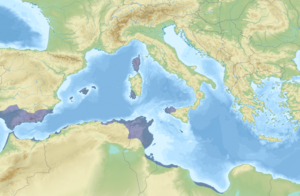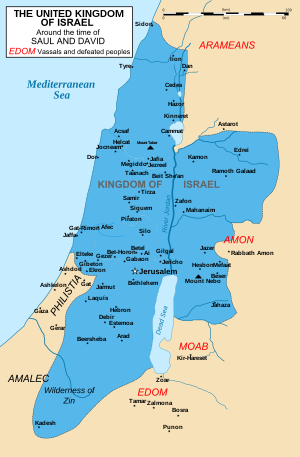History of the Jews in Carthage



Carthage (from Punic: 𐤒𐤓𐤕𐤟𐤇𐤃𐤔𐤕, romanized: qart hadaš, lit. 'New City') was a city in North Africa located on the eastern side of the Lake of Tunis across from the center of what is now Tunis in Tunisia.
Though
Origins
Carthage was founded by Tyrians.
According to the Hebrew Bible, Tyre and Sidon were part of the tribe of Asher.
The fifth lot fell to the tribe of the Asherites, by their clans. Their boundary ran along Helkath, Hali, Beten, Achshaph, Allammelech, Amad, and Mishal; and it touched Carmel on the west, and Shihor-libnath. It also ran along the east side to Beth-dagon, and touched Zebulun and the Valley of Iphtah-el to the north, [as also] Beth-emek and Neiel; then it ran to Cabul on the north, Ebron, Rehob, Hammon, and Kanah, up to Great Sidon. The boundary turned to Ramah and on to the fortified city of Tyre; then the boundary turned to Hosah and it ran on westward to Mehebel, Achzib, Ummah, Aphek, and Rehob: 22 towns, with their villages. That was the portion of the tribe of the Asherites, by their clans—those towns, with their villages.
— "Joshua 19:24-25". www.sefaria.org.
Identification with Tarshish
The Hebrew Bible never mentions Carthage, though the
Jewish settlement
A tradition conserved among the Jews of Djerba nearby states that the community was built of exiles after the Siege of Jerusalem in 597 BCE who had joined earlier Jews living there, that the el Ghriba Synagogue has an equally ancient date, and that some of this community assisted the Phoenicians in establishing Carthage.[7]
One theory has espoused the idea that, the destruction of Tyre, Sidon, and Carthage created a Phoenician diaspora not unlike that of the Jews and that the puzzling disappearance of Phoenicians may have been due to the attraction they might have felt for a similarly dispersed people, leading to conversion to Judaism.
The French archaeologist
Tertullian, though at times venting his ire at Jews, stating that synagogues were "fountains of persecution" and that Jews harassed Christians (a suggestion for which there is no evidence from North Africa at that time), nonetheless in his remarks on the community at Carthage also shows that they earned his grudging respect.[13]
Some accounts state that after
Quotation attributed to the Carthaginian rabbi Abba ben Isaac
Rabbi Abba bar Rav Yitzḥak says that Rav Ḥisda says, and some say that Rav Yehuda says that Rav says: The gentiles living from Tyre to Carthage recognize the Jewish people, their religion, and their Father in Heaven. But those living to the west of Tyre and to the east of Carthage recognize neither the Jewish people nor their Father in Heaven.
— Abba of Carthage in Tractate Menaḥot 110a, cited by Isaac Abarbanel in the Rosh Amanah "Principles of Faith"[16]
See also
- Maghrebi Jews
- History of the Jews in Tunisia
- History of the Jews in Morocco
- History of the Jews in Algeria
- History of the Jews in Libya
References
- ^ ISBN 978-0-521-77248-8.
- ISBN 978-0-198-14083-2p.217
- ^ Τὸ ῥῆμα Τύρου. Ὀλολύξατε, πλοῖα Καρχηδόνος:'A prophecy against Tyre.:Wail, you ships of Tarshish!'(NIV)
- ISBN 978-9-004-11791-4p.178
- ^ Arcadio del Castillo, 'Tarshish in the Book of Jonah,' Revue Biblique Vol. 114, No. 4, October 2007, pp. 481–498 p.482.
- ISBN 978-1-317-49127-9p.29: 'The identification of Carthage with Tarshish is improbable'.
- ^ Binder, 2012 p.17.
- ISBN 978-90-04-10418-1.
- ^ Rives, 1995 p.220
- ISBN 978-90-04-23478-9.
- ISBN 978-0-521-77248-8.
- ISBN 978-0-521-77248-8.
- ISBN 978-0-521-77248-8.
- ^ Dubnow, Simon (1967). History of the Jews: From the Roman Empire to the early medieval period. Associated University Press. pp. 215, 482.
- ^ Procopius, De Bello Vandalico,2:9.
- ISBN 978-0-415-16860-1.
